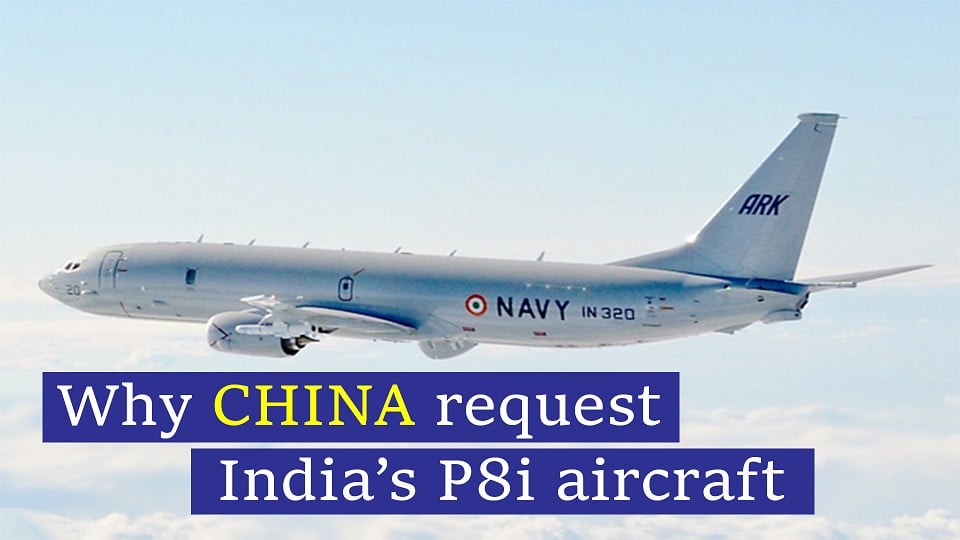Aerospace
Indian Navy Uses P-8 Poseidon of US Origin to Assist Chinese PLA Navy in Locating Sunk Ship

The warships of China and India rarely work together on international waters. In response to a request from the Chinese PLA Navy, the Indian Navy’s US-made P8I Poseidon surveillance aircraft assisted in the search and rescue (SAR) operation of a sunken Chinese fishing vessel in the Southern Indian Ocean region on May 17.
The Indian P-8I flown by the Indian Navy has already accumulated 40,000 flying hours and has continued to provide India’s defense with promising surveillance support.
In an immediate humanitarian response to the drowning of the Chinese fishing vessel Lu Peng Yuan Yu 028 with 39 crew members on board, the Indian Navy deployed its Air Maritime Reconnaissance capabilities in the Southern Indian Ocean region on May 17.
Boeing created the P-8I aircraft as an anti-submarine warfare (ASW) and maritime patrol aircraft for the Indian Navy. It is built on the Boeing 737-800 platform and is intended only for use in marine operations.
The P-8I can carry out a variety of duties, including intelligence gathering, surveillance, reconnaissance, and anti-submarine operations, thanks to its sophisticated sensors and mission systems. Modern acoustic systems, electro-optical and infrared sensors, and radar systems are included for locating and tracking submarines.
Despite bad weather, P8I aircraft conducted several, thorough searches and discovered numerous things that might be associated with the sunken ship, according to Commander Madhwal.
The Lu Peng Yuan Yuan Yu vessel’s crew was made up of people from the Philippines, Indonesia, and China. The Indian aircraft (P8I) responded immediately by deploying search and rescue equipment at the location at the request of PLA (N) ships sealing the area, according to the Indian Navy’s Spokesperson.
About 267 nautical miles separated the Chinese fishing vessel from the strategically significant Diego Gracia outpost of the US and UK armed troops in the Southern IOR. The Chinese ship’s catastrophe occurred 900 nautical miles off the coast of India, south of the Maldives.
“In a display of India’s obligations as a credible and responsible partner for ensuring safety at sea, the Indian Navy units also coordinated SAR efforts with other units in the area and guided the PLA(N) warships transiting to the scene of the incident,” Indian Navy tweeted from its official Twitter account along with a file picture of P8I and area-map of the SAR site.
for more info click

Aerospace
Boeing Transfers Rocket Stage to NASA, Paving Way for Human Moon Mission

Boeing has achieved a significant milestone by providing NASA with the second core stage of the Space Launch System (SLS) rocket.
This crucial component, crafted at NASA’s Michoud Assembly Facility (MAF), is set to propel the Artemis II crew into lunar orbit, marking humanity’s return to deep space after a 50-year hiatus.
The monumental Boeing-built rocket stage, the largest element of the Artemis II mission, will embark on a journey aboard the Pegasus barge, traveling 900 miles to NASA’s Kennedy Space Center.
Comparison of two legendary aircraft B777x vs B747 aircraft:Click here
Upon arrival, it will be meticulously integrated with other essential Artemis II components, including the upper stage, solid rocket boosters, and NASA’s Orion spacecraft within the iconic Vehicle Assembly Building. This intricate integration process is a vital step toward the eagerly anticipated Artemis II launch, slated for 2025.
“Boeing-built products helped land humankind on the moon in 1969, and we’re proud to continue that legacy through the Artemis generation,” remarked Dave Dutcher, vice president and program manager for Boeing’s SLS program. “Together, with NASA and our industry partners and suppliers, we are building the world’s most capable rocket and paving the way to deep space through America’s rocket factory in New Orleans.”
NASA, Lockheed Martin Reveal X-59 Quiet Supersonic Aircraft:Click here
The delivery of Core Stage 2 marks a significant achievement in the evolution of the SLS rocket. Towering over 200 feet and powered by four RS-25 engines, this core stage, coupled with two solid-fueled booster rockets, will generate a staggering 8.8 million pounds of thrust. This immense power is crucial to launching Artemis II and future missions into the vast expanse of space.
The SLS rocket stands unparalleled in its capability to transport both crew and substantial cargo to the moon and beyond in a single launch. Its extraordinary capacity will facilitate the delivery of human-rated spacecraft, habitats, and scientific missions to destinations including the moon and Mars, ushering in a new era of space exploration.
-

 Travel1 week ago
Travel1 week agoAir India to Expand US Operations with Three New Routes After a Decade
-

 Travel2 weeks ago
Travel2 weeks agoWhy We Should Avoid These Stamps in a Passport
-

 Airlines1 month ago
Airlines1 month agoInvestigations Reveal Fake Chinese Titanium in Boeing and Airbus Jets
-

 Tech4 weeks ago
Tech4 weeks agoChina’s CATL Plans 1,800-Mile Electric Plane Launch by 2027
-

 Airport3 days ago
Airport3 days agoTop 10 Largest Airports in the World by Size
-

 Aerospace4 weeks ago
Aerospace4 weeks agoChina’s Fighter Jets Turn Wings into Autonomous Drones
-

 Airlines4 days ago
Airlines4 days agoAir India Rolls Out A350s for Delhi-New York JFK and Newark Routes
-

 Defence3 weeks ago
Defence3 weeks agoBoeing Enhances Chinook with New Engines and Block II Upgrades at $96 Million







